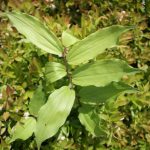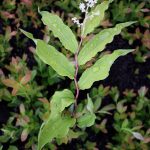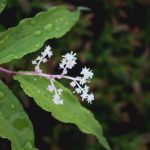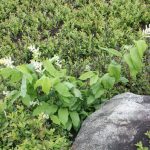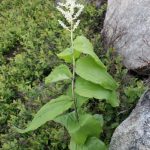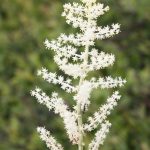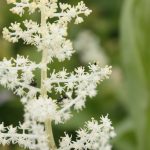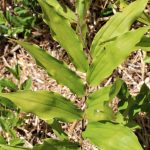False Solomon’s seal
Prepared by Jennifer L. D’Appollonio, Assistant Scientist, University of Maine, Orono, ME 04469. Updated April 2019.
Scientific name: Maianthemum racemosum (L.) Link ssp. racemosum; old Smilacina racemosa (L.) Desf.
Common name(s): false Solomon’s seal, Solomon’s plume, false spikenard, feathery false Solomon’s-seal, feathery false lily-of-the-valley
Links: USDA PLANTS Profile, NPIN Profile, Go Botany
Images: (to see enlargements [PC]: click on image, then right click and choose “view image”)
- end of May
- in flower, early June
- terminal flower spike
- mid-June
- flower detail
- post-flowering
Description:
– herbacious perennial
-leaves are
- alternate
- elliptic
- ovate
- 6 inches long
- -parallel veins
-rhizomes
-fibrous roots
– generally flowers in June in ME
Agriculture:
-pollinated by
- bees
- flies
- beetles
Habitat:
-moist deciduous forests
-partial shade
-well drained soils
Natural History:
-historical medical uses
- eating the root and leaves
-fruit is edible when ripe
Source(s):
Heinrich, B. 1976. Flowering phenologies: Bog, woodland, and disturbed habitats. Ecology. 57(5):890-899.
Go Botany. “Maianthemum Racemosum (L.) Link.” Maianthemum Racemosum (Feathery False Solomon’s-Seal): Go Botany, 2021, gobotany.nativeplanttrust.org/species/maianthemum/racemosum/.
Mahr, Susan. “False Solomon’s Seal, Maianthemum Racemosum.” Master Gardener Program, University of Wisconsin, 27 July 2020, mastergardener.extension.wisc.edu/article/false-solomons-seal-maianthemum-racemosum/.

